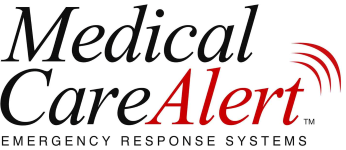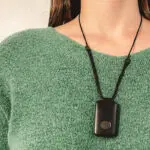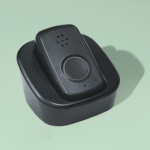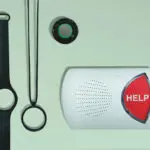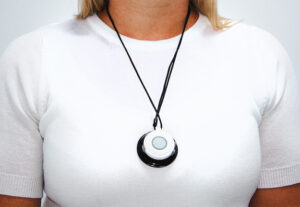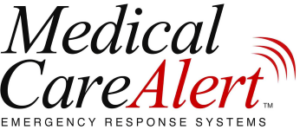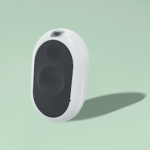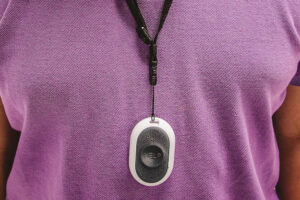Table of Contents
- Our top pick for best overall fall protection from a medical alert necklace is the Medical Guardian Mini. At only 0.08 pounds, the MGMini is the lightest and smallest medical alert necklace on the market. It has an extended battery life of 5 days and add-on features like real-time emergency contact alerts.
- For on-the-go fall detection, we recommend MobileHelp Micro for its sensitive detection and multi-day battery life.
- Fall detection is usually $25–$35 per month. MobileHelp offers the lowest starting monthly cost at $19.95. Common additional costs include activation fees, equipment fees, and fall detection.
- Individuals who are at risk of falls due to age, medical conditions, or mobility issues could benefit from using a fall detection necklace.
- When purchasing a medical alert necklace with fall detection, consider features such as range, water resistance, battery life, and reliable 24/7 monitoring services to ensure comprehensive safety coverage.
When Charlene H.’s mother passed away, she realized she’d be living alone and wanted extra protection. Her mother had used a medical alert necklace, so the High Point, North Carolina resident decided to get herself one as well.
“It has given me a sense of security that I know if anything happens, I can press the button and be responded to,” she says.
Charlene emphasizes that her medical alert necklace doesn’t interfere with her regular activities, and she only notices she’s wearing it when she’s exercising. Fortunately, she hasn’t had to use her necklace during an emergency.
“I have not needed them (the monitoring center) in an emergency. I have it just in case, but I have been very fortunate to not have needed any assistance in regards to an emergency,” she adds.
If you’re a caregiver researching medical alert necklaces, remember they’re not the same as medical ID necklaces. While both are crucial safety tools, they have different purposes. Medical alert necklaces connect to a 24/7 monitoring center with a button. Medical ID necklaces list health conditions, current medication, and other important health information if you can’t communicate them during a medical emergency.
Medical alert necklaces are more than a help button that connects to the monitoring center—you can also choose features like fall detection and location tracking to help support your caregiving plan.
The Handbook Team wants to make your search for the best medical alert necklace as simple as possible, so we narrowed our choices to three clear winners after hand-testing 16 necklaces.
Which medical alert necklace is right for you?
- Medical Guardian MGMini: Best overall
- MobileHelp Micro: Best on-the-go fall detection
- Bay Alarm Medical SOS Home: Best at-home fall detection
- Medical Care Alert Home & Away Ultra: Fastest response time
What you need to know about the best medical alert necklaces
Here are the five most important things to know about the best medical alert necklaces.




Our testing experience
Just like we determined the best medical alert systems, the Handbook Team picked our top medical alert necklaces based on our actual experience wearing and using the devices.
We tested 16 medical alert necklaces across eight brands:
- Bay Alarm Medical
- GetSafe
- HandsFree Health
- LifeFone
- Lively
- Medical Care Alert
- Medical Guardian
- MobileHelp
Our team considered well-known brands with a generally positive reputation when choosing medical alert systems to test. We picked brands with various pricing options, device designs, and safety features.
Our testing process looked like this:
We spent most of our testing contacting the monitoring center since this is the most important feature of any medical alert system.
From our tester
“The MobileHelp Micro registers falls with verbal confirmation, and we like that the monitoring center agent verified the user’s name every time we called. The necklace’s speaker is also very sensitive—we were able to speak with the agent about 2 feet away from the device.”
We also conducted six fall tests with each necklace that had fall detection. Research shows that the best placement for accurate fall detection is on the chest or worn as a necklace. While many medical alert brands now offer medical alert watches, these devices are still most accurate when worn at chest level.
Although we rigorously test each fall alert necklace by simulating multiple falls, our fall detection testing isn’t 100% accurate. Researchers estimate we’d need to record about 100,000 days of activity to create enough real-world fall data.
How we tested fall detection necklaces:
- Our team conducted three “slow” and three “fast” test falls while wearing the fall detection device. We started all slow falls by sitting in a chair at 90 degrees and dropping to our knees before falling face down on a mat.
- For the fast fall, we dropped the device from shoulder height to the mat to replicate a fast, hard-impact fall.
Generally speaking, a hard fall is a fall that can be difficult to stop, happens quickly, and results in a strong impact to the body. A slow fall is a fall that occurs more gradually, and the impact is likely weaker. However, individuals are not immune to injury after a slow fall.
Sean Marchese, a registered nurse with more than 20 years of experience.
We also evaluated each medical alert necklace by asking the following questions during testing:
- Can monitoring center agents see our correct GPS location? (on-the-go devices)
- Did the necklace initiate an emergency call when it shouldn’t have?
- Is the necklace comfortable to wear?
- Is it comfortable to sleep in?
- Are there low battery alerts?
- Is it easy to place the device in the charging cradle? (on-the-go devices)
- Does the device alert you when it’s fully charged?
From our tester
“The MobileHelp Micro was much more comfortable than the Solo model. It doesn’t have a magnetic clasp and the lanyard material seems a little cheap, but it rests more comfortably on the chest and is lightweight.”
Compare the best medical alert system necklaces of 2024
| Starting monthly price | $39.95 | $39.95 | $24.95 | $39.95 |
| Fall detection monthly fee | $10 | $11 | $10 | $10 |
| Fall detection accuracy | 5/6 | 6/6 | 6/6 | 5/6 |
| Average response time (seconds) | 46-60 seconds | 1-45 seconds | 60+ seconds | 1-45 seconds |
| In-home range (feet) | <1,299 ft | N/A | 1,000 | N/A |
| Mobile device battery life (days) | 5 days | Up to 5 | N/A | 3 |
Reviews of the best medical alert system necklaces
1. Best Overall: Medical Guardian MGMini
2. MobileHelp Micro: Best On-the-Go Fall Detection
3. Bay Alarm Medical SOS Home: Best At-Home Fall Detection
4. Medical Care Alert Home & Away Ultra: Fastest Response Time
Pros and cons of medical alert system necklaces
What we like about medical alert system necklaces
- Optional fall detection is available.
- Fall detection is usually more accurate in necklaces than wrist-based devices.
- Can speak with a monitoring agent through on-the-go devices.
- Depending on the size, they can be hidden under a shirt.
Having style options to choose from was nice. The watch required dexterity my mom no longer has. The necklace works perfectly, she likes to hide it under her shirt.
Mea S., a caregiver for her mother in Vermont
What we don’t like about medical alert system necklaces
- Some have non-adjustable lanyards.
- At-home help button necklaces don’t have two-way speakers.
- Not safe or comfortable to wear while sleeping.
- Sensitive fall detection may mean more false alarms.
Handbook Team Tip #1
Most medical alert necklaces allow you to cancel a false alarm by holding down the help button. If you don’t cancel the alarm in time, tell the monitoring center agent it was a false alarm. You’ll never be penalized for accidental calls.
How much do medical alert system necklaces cost?
The main cost of your medical alert necklace is the monthly monitoring fee, which is usually $25–$40 per month and varies by brand and device. When budgeting for a medical alert necklace, remember the monthly monitoring fee is usually not the final cost.
Most medical alert systems offer the following features for an additional monthly fee:
- Fall detection.
- Add-on accessories, like wall buttons, lock boxes, and extra medical alert necklaces.
- A protection plan in case equipment is damaged, stolen, or lost.
Also, consider possible one-time fees that may get added to your medical alert necklace, such as:
- Activation fee.
- Equipment fee.
- Shipping costs.
Handbook Team Tip #2
Most medical alert system brands offer discounts with an annual payment plan, such as a free service month, waived shipping fees, or a free lockbox.
Top features to look for in medical alert necklaces
I recommend this (GPS location tracking) particularly for patients with dementia or Alzheimer’s because they sometimes wander off and get hurt. The fall detection feature should also be factored in when buying the necklace. Generally, older adults and their families feel more secure knowing that help can still find them if they’re not able to reach for the device.
Nancy Mitchell, a registered nurse and geriatric director of care in Atlanta.
How to choose the best medical alert pendant for you
The right medical alert necklace for you or your care recipient will vary depending on your lifestyle and needs. Review our table below to help you narrow down the most important features.
| Medical alert necklace features | Who benefits most from this option? |
|---|---|
| At-home | Users who only need monitoring in and around their home because they are accompanied by a caregiver outside the home. |
| On-the-go | Users who enjoy independent activities outside their homes like driving, running errands, and visiting family and friends. |
| Fall detection | Those with a history of falls or a high risk of falling due to medical conditions, mobility, and other factors. |
| GPS tracking | Users who have a more independent lifestyle. |
| Water-resistant | Those who primarily shower instead of taking a bath. |
| Waterproof | Users who prefer soaking in a bathtub instead of showering. |
Handbook Team Tip #3
Always involve your care recipient in the shopping process. If they’re still hesitant to wear a medical alert necklace, frame the company’s trial period as a chance for them to see if they like wearing and using it.
Our final verdict
After testing 16 devices across eight brands, we believe Medical Guardian, MobileHelp, Bay Alarm Medical, and Medical Care Alert offer the best medical alert necklaces.
The Medical Guardian Mini is our overall pick for a medical alert necklace because it’s small and lightweight, easy to set up and operate, and can last up to 5 days on a single 4-hour charge. The customer service is also top-notch, which is especially helpful if this is your or your family’s first time using a medical alert necklace.
The MobileHelp Micro and Medical Care Alert Home & Away Ultra are both excellent on-the-go options, but MobileHelp fall detection sensors performed slightly better than Medical Care Alert. The Micro detected six out of six falls, while the Home & Away Ultra detected five out of six falls. Medical Care Alert is also one of the only brands with EMT- and EMD-trained monitoring center staff. We like this option for users with more serious or multiple medical conditions.
The Home & Away Ultra had the fastest response time of the three medical alert necklaces: 29 seconds.
As a caregiver, we encourage you to offer multiple options to your care recipient when helping them choose the right medical alert necklace. No matter how discreet or helpful the device is, your care recipient may still hesitate to wear it as part of their daily routine. Help them feel empowered by letting them decide which emergency necklace style and brand work best for them.
“Aging can be emotionally challenging, especially for people who were always independent,” says Mitchell. “Having a medical alert device can be a difficult transition for these people. In those cases, the less obvious the device, the better. They’re more likely to wear the alert system if they don’t feel embarrassed about it.”
Frequently asked questions
Some Medicare Advantage (Part C) plans cover medical alert necklace costs, but Original Medicare (Part A and B) does not. Coverage varies by insurance plan and state, so you should always check with your insurance provider.
Medical Guardian, MobileHelp, Bay Alarm Medical, and Medical Care Alert offer some of the best medical alert necklaces based on our testing. The right necklace for you or your care recipient will depend on specific needs, such as medical conditions, activity level, care environment, budget, and other considerations.
Bay Alarm Medical SOS Home starts at $29.95 per month, making it the lowest-priced medical alert necklace in our review. Medical Guardian, MobileHelp Micro, and Medical Care Alert Home & Away Ultra all start at $39.95 per month. Remember that these are base prices without extra features like fall detection added to the monthly price.
Medical alert necklace costs can range from about $20–$40 per month, depending on the brand and type of device you choose. Typically, mobile systems cost more than at-home systems, and some mobile devices include an extra $100–$200 equipment fee. Including fall detection with your medical alert necklace adds $10–$11 to your monthly cost.
A medical alert necklace is best if you want accurate fall detection or an on-the-go system that contacts the monitoring center outside your home. Most on-the-go devices are designed to be worn as necklaces, but sometimes you can purchase a bracelet that connects to the mobile system. You can wear the discreet bracelet while tucking your mobile system in your pocket or purse, but most mobile systems won’t activate fall detection unless the device is worn around your neck.









